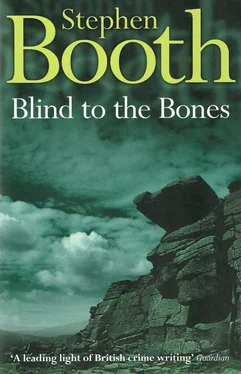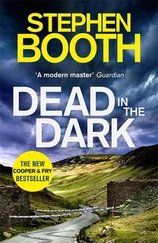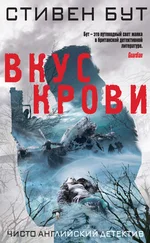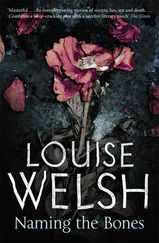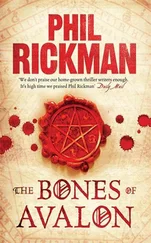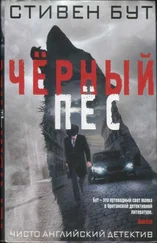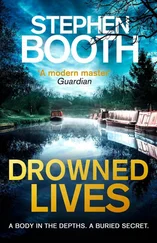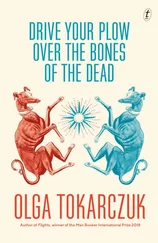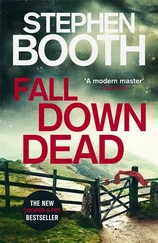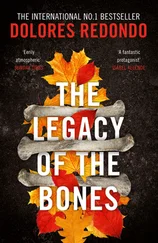‘Arthur Scargill killed our mice,’ said Murfin. ‘Bastard.’
Cooper remembered Scargill, too. He had been the miners’ leader during their turbulent strike in the 1980s. The strike had resulted in many bloody pitched battles between police and pickets, and it wouldn’t be easily forgotten in Derbyshire.
‘I think he’s retired now.’
‘Damn, I forgot to send him a card,’ said Murfin.
‘But the thing is,’ said Cooper, ‘I would have thought all the rats would die out when the tunnels were finished and the trains began running. Surely the navvies would move on to another job somewhere, and their shanty towns would be demolished? The rats’ food source would have dried up.’
‘Maybe they did die out,’ said Norton. ‘But they’re back again now. They seem to eat as much poison as I can put down, and thrive on it.’
‘Super rats?’
‘If you want to call them that.’
Thanks to mild winters, the rat population had been rising fast, and they were getting bigger year by year. They could grow to the size of a small dog where they fed on the leftovers from fast-food outlets. In the country, rats normally ate crops out of the fields and were supposed to be smaller, and easier for a terrier or a cat to deal with. But an increasing volume of human visitors had made a big difference to country rats.
‘How often are the tunnels checked?’ said Cooper.
‘The cableway is inspected regularly. The others not so often. Why?’
‘If feasible, it might be an idea for someone to check inside the old tunnels. At least as far as the first air shaft.’
Norton looked at him, but for some reason he didn’t ask the obvious question. Perhaps it was the expression on Cooper’s face that told him the answer would be something he didn’t want to know.
‘How long have the high-voltage cables run through the other tunnel?’
‘A long time. Since 1969, well before the line was closed in the new tunnel.’
So four hundred thousand volts had been buzzing below the hill for the last thirty-four years. Maybe that was what had re-energized the rat population.
‘Of course, it’ll be different if they re-open the railway line,’ said Norton.
‘Do what?’
‘Through the newer tunnel, of course, not these old ones. They’ll have to re-electrify it. Twenty-five thousand volts, they say. Because the Channel Tunnel won’t take diesels.’
‘Channel Tunnel? What on earth are you talking about?’
‘I suppose it might not come off,’ said Norton. ‘But that’s the plan. A rail link all the way from Liverpool to Lille in France, through one of these tunnels here. Nine trains an hour in each direction. They reckon it could take two million lorries a year off the motorways. Imagine driving your lorry on to a train in Liverpool and driving off in France. And all thanks to these tunnels. Just think about the men who blasted their way with gunpowder through these hills for three miles to make them.’
‘They were navvies, like the men who built the canals?’
‘That’s right. Not Irish, though. For some reason, almost all of the navvies on the Woodhead tunnels were English. The conditions must have been pretty awful for them up here.’
‘You’re not kidding,’ said Murfin. ‘It isn’t exactly the Riviera now, is it?’
‘No. Actually, a lot of the men died, in one way or another. Accidents of various kinds, and illness. The first tunnel killed thirty or forty men, and injured over six hundred. They built the second tunnel from arches in first bore, and that killed dozens more. Woodhead was known for death and disease in those days. They called it the Railwaymen’s Graveyard.’
‘Bloody hell,’ said Murfin. ‘You’re starting to scare me. I think I prefer Diane Fry.’
Norton looked at him, puzzled. ‘Well, they were short of food, and had no clean water,’ he said. ‘They worked seven days a week in appalling conditions, constantly soaking wet and freezing cold in the winter. It’s not surprising so many of them died. Someone worked out that the death rate among the Woodhead navvies was higher than among British soldiers who fought in the Battle of Waterloo.’
‘Hold on,’ said Cooper. ‘Waterloo?’
‘It was about twenty years before the first tunnel was started.’
‘Right.’
‘The navvies were very superstitious, you know. They had so many disasters that they thought their digging and blasting had disturbed some evil spirit that had been sleeping deep under the hill. According to the stories, they carved symbolic faces over these portals to control the evil.’
Cooper followed his gaze. ‘I can’t see anything.’
‘No.’ Norton sighed. ‘No one cared about those navvies at all, you know. It was only afterwards that the conditions they worked in came to light. There were springs that caused flooding, and the men were always soaking wet. They had fumes and gas to deal with, and there was twenty-four-hour shift work, with no time off. Those first tunnel builders just had a shanty town, with mud huts shared by fifteen men at a time, and all their supplies brought over the moors. They paid into a club for a doctor for themselves — the company gave no help. The only thing that was cheap was beer, so a lot of them would have been alcoholics by the time they finished the tunnels. There were no old navvies, anyway. They were lucky if they lived to forty.’
‘Do they send you down here to entertain the tourists?’ said Murfin. ‘Or are you practising for a job at the Count Dracula Experience?’
But Norton ignored him. ‘And you know what?’ he said. ‘There were steam shovels available for tunnelling by 1843, but they didn’t use them here. Men’s lives were cheaper.’
‘Where was this shanty town?’ said Cooper.
‘Where was it? What are you asking me that for? You said you’ve just come from there.’
Cooper stared at Norton. ‘From where?’
‘Withens, of course.’
‘Withens started as the navvies’ shanty town?’
‘Fifteen hundred men used to live up there when they were working on the tunnels. All they had were huts made out of mud and piles of stones, with heather chucked on top for a roof. It doesn’t bear thinking about, does it? Not in the winters they get up here.’
Cooper looked at the dark mouths of the old railway tunnels again, expecting to see rats scuttling across the dirt floor. Apart from steel fences and gates, the newer tunnel had been left unobstructed. With a new trackbed, it was almost ready for those Euro expresses to go through.
Somewhere along the three-mile length must be the lower opening of the air shaft that emerged on Withens Moor, two hundred feet above. He wondered if the rats could run up the inside of the air shaft, too. He could picture them spiralling their way upwards between the courses of stone, jerking and stopping, sniffing the air, then running ahead again. He imagined they would climb almost in silence, dragging their tails on the stone as their pale feet and long claws found a purchase in the crumbling mortar and they gradually emerged from the darkness on to the moor. On to the moor where Neil Granger had lain dying.
‘Smashed like a clay flower pot,’ said Juliana Van Doon, running water on to her dissection table to rinse away the blood and body fluids.
‘Forgive me,’ said Diane Fry. ‘But that doesn’t sound very scientific.’
She looked at the pathologist curiously. There weren’t many cases that moved Mrs Van Doon to metaphor. The killing of children, yes, or something else particularly tragic. But a young man who had met a violent death? She must see plenty of those.
‘The skull,’ said the pathologist. ‘It’s a wonderful thing, the skull, and it does a terrific job of protecting our brain. But hit it hard enough, and you soon find out how brittle it is. The seat of our intelligence becomes no more than a few dying roots, and dirt trickling from a smashed flower pot.’
Читать дальше
Конец ознакомительного отрывка
Купить книгу
